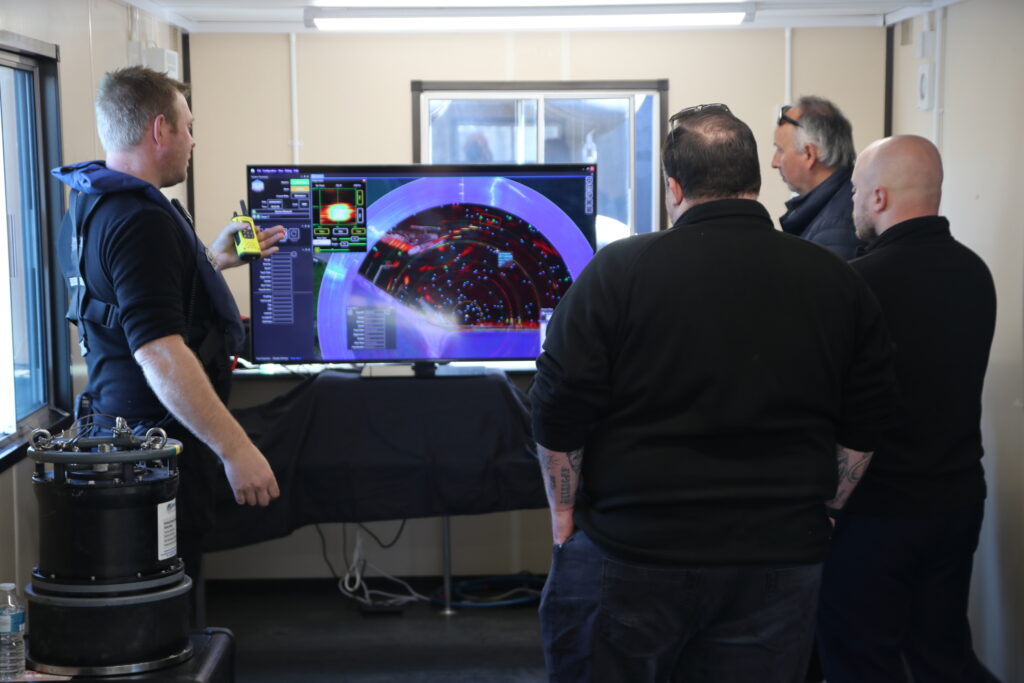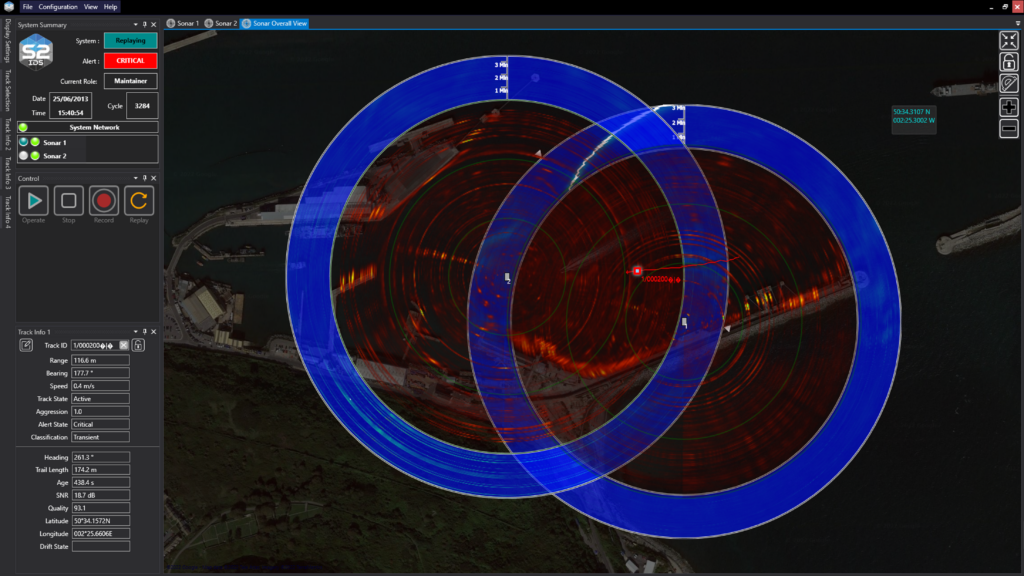Asymmetrical Threats – Sentinel IDS® Intruder Detection Sonar
Asymmetrical Threats – Sentinel IDS® Intruder Detection Sonar
Executive Summary
Naval warships are vulnerable alongside. While gangway staff are present 24/7 at a ship’s entry point and bases are patrolled with security guards, cameras and fencing, the fact remains that today one of the greatest asymmetrical threats can come from a perpetrator, with basic diving equipment and little training, approaching a ship underwater, undetected and with relative ease.
This paper by Sean Leydon, Regional Manager at Asia Pacific for Forcys, discusses the issues that face modern warships and submarines alongside either at home or away, the degrees to which they have been targeted under this vulnerable state, and solutions to provide protection to both the warship and its crew.
Asymmetric Threats
History has recorded several examples of what the asymmetrical threat of placing rudimentary explosive devices on the hulls of ships can cause. From the Vietnam conflict where a diver sank the 9,000-ton USS Card with an explosive attached to the hull, to the more recent incident on 12th May 2019 where four commercial ships were targeted in the port of Fujairah in what the UAE described as a “sabotage attack”. An international investigation concluded that there were “strong indications” that the attacks were perpetrated by a sophisticated “state actor” that breached their hulls with explosives. The threat is real and so far, has proven difficult to detect and counteract without a dedicated intruder detection sonar.
From Surface Attack to Underwater Attack – The Increased Difficulty
While surface attacks on vessels in port have delivered devastating effects, the barrier to transition this threat to the more complex underwater domain has been mainly due to the access and cost of the technology and the training required to utilize it.
From the early 1990’s however, the number of sport diving rebreather brands and underwater motorized equipment has rapidly increased. Advanced sport divers increasingly tackle longer, deeper, riskier dives using equipment once available only to armed forces or professionals. Acquiring rebreather or scuba equipment and receiving technical training is no longer a barrier.
Protection of Assets – Capability Phases
Security of warships in port includes the requirement to inspect, detect and identify anomalies on ships, and wharfs and to also employ fast boats as a deterrent. As previously mentioned, base security and surveillance in ports usually covers the above water threat, including those on the water such as boats and swimmers, however, it does not cover the underwater threat from divers and underwater vehicles.
The following discusses the different phases required to defend against the underwater threat.
Phase One – Surveillance
The system must be capable of providing a constant picture of the underwater environment and any changes to it. The capability used must not only be able to provide surveillance, but be transportable, scalable, networked, and simple to operate. While permanent systems can be setup in a ship’s home port, it must be transportable and easy to setup by ship’s company if the ship has berthed in a foreign port.
Phase Two – Detection
Surveillance is only the first step of defense against a threat. The system in place must also be able to detect when an intruder (not marine life or false targets) is within an area of interest. The system needs to continuously monitor the surrounding area, understand the difference between an intruder or false target, and track the designated target of interest that it has acquired.
Phase Three – Tracking
Sonar is capable of generating thousands of detections. Each one of these needs to be tracked. Their direction of travel and behavior will provide important cues to the next phase.
Phase Four – Classification
Whether the intrusion is from a scuba diver, rebreather or underwater vehicle, the system should provide the classification of the target for the end user. This will allow the response process to be coordinated with the appropriate action.
Sentinel: The world’s leading Intruder Detection Sonar
The Sentinel Intruder Detection Sonar (IDS) from Wavefront Systems is a commercial off-the-shelf (COTS), compact, lightweight system with a proven track record of global performance for the military and private use. Using sophisticated sonar processing algorithms, Sentinel provides fully automatic detection and tracking of potential underwater threats and targets of interest while analyzing their behaviors. It provides protection against underwater threats including:
- Divers (closed/open circuit);
- Swimmer Delivery Vehicles (SDVs);
- Diver Propulsion Vehicles (DPVs); and
- Unmanned Underwater Vehicles (UUVs).
Portable
Weighing only 32 kgs, the Sentinel head is ideally suited for deployed warships or security units responsible for its safe arrival/berthing. Consisting of a sonar head, workstation, cables, and deployment frame, Sentinel is mobile and simple to set up. This enables operators to quickly initialize the system and secure a berth, whether deployed over the side or through the ship’s hull.
Operation
Operation of the Sentinel IDS GUI is simple, intuitive, and highly configurable. The tactical picture can be fused with localized charts and tailored to operators’ requirements, allowing the effective detection, tracking and classifying of targets.

Classification – Active and Passive Tracking
Sonars can receive signals either passively (receive only) or actively (transmit and receive) – Sentinel, uniquely combines both active and passive processing using it’s patented SInAPS® technology (Simultaneous In-band Active and Passive Sonar) allowing the passive emissions from the target to help detection and tracking when active tracking may not be possible. Furthermore, this can also help with classification of targets (for example marine life do not generally emit sound, while an AUV provides constant propeller noise).
Both types are tracked and displayed in an intuitive way which helps the operator associate the tracks and make the correct tactical decisions.

Deployment
Sentinel is designed to protect ports, harbors, commercial and naval vessels, offshore platforms, and waterside facilities. Over 200 systems sold and installed, Sentinel operates across all oceans and is already used to protect naval bases, military vessels and critical national infrastructure.
Networked System
Sentinel is capable of standalone operation or in multiple sonar head configuration for a larger security perimeter. The Sentinel sonars heads can be deployed at points around a port and work together using Wavefronts unique Super Inheritance™ technique to deliver a single set of threats to the user.

In Summary
Wavefront Systems deployed the first Sentinel in 2009, it was a revolutionary sonar in that it was both extremely portable and offered unrivalled range and performance. Since that time the system has evolved to enable new methods of deployment, networked capabilities and improved tracking. The recent addition of simultaneous passive sonar capability means that Sentinel is yet again setting the performance at a higher bar than was thought possible. This is even more important as the threat from state actors is on the increase
If you would like to learn more about Sentinel IDS please feel free to get in touch with the team.
More from The Watch
How could industry and defense work collectively to enhance the security and protection of critical national undersea infrastructure?
How could industry and naval forces work collectively to enhance the security and protection of critical national undersea infrastructure?

Share On